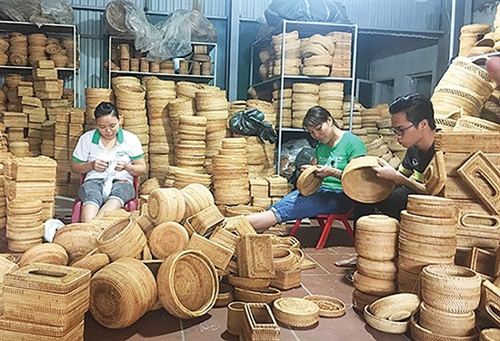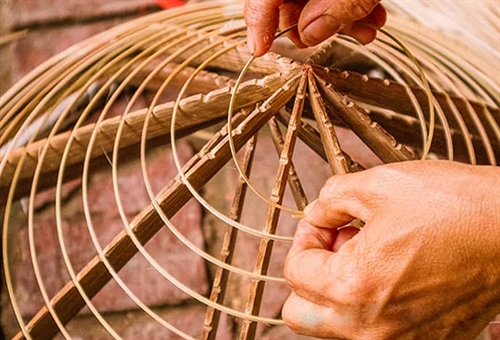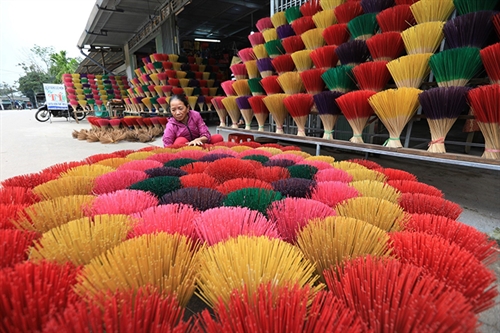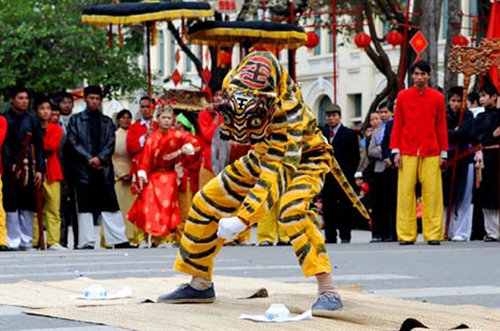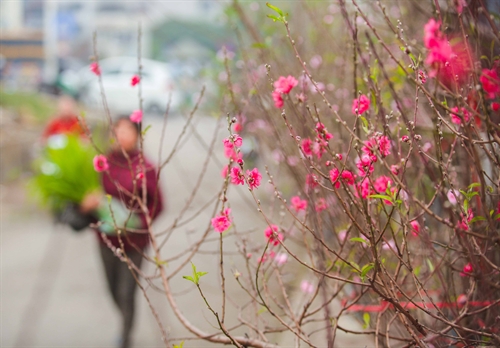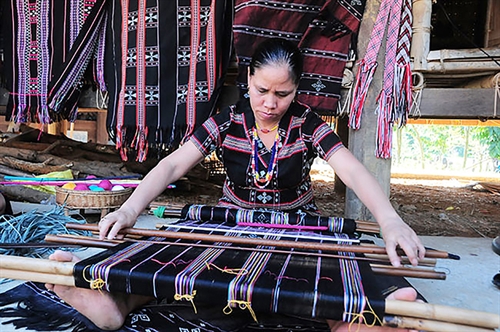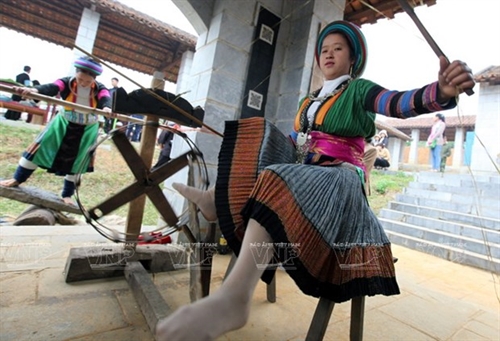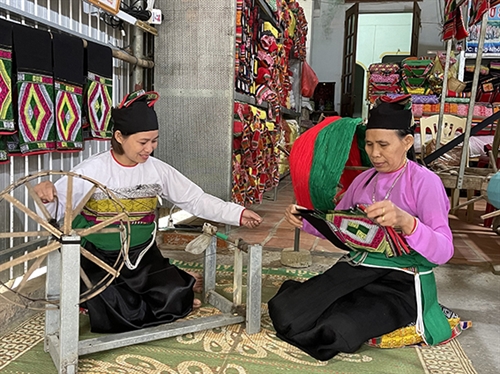Do Thi Nguyet Que
Located in the commune of the same name of Bac Ninh province’s Gia Binh district, some 35 kilometers from Hanoi, the Xuan Lai traditional bamboo craft village has been famous for its unique smoked bamboo products, particularly rustic, soulful paintings.
No one knows exactly who the founder of the craft village was but historical documents revealed that the area (now Xuan Lai village) was well-known for the bamboo craft in the Le Trung Hung dynasty (in the 17th or 18th century). There used to be no guild in the village and the craft was passed down from father to son for generations. In the past, the villagers used different varieties of bamboo available in the locality to make ladders, beds, stools, fishing rods and farm tools to serve their daily life. Nowadays, other species of bamboo taken from other northern provinces are used, enabling craftsmen to produce diversified products.
Although Xuan Lai village’s bamboo products look simple, their production process is quite complicated with various steps, including the selection of raw materials, treatment, knot removal and scrapping, smoking, and straightening/bending.
 |
| Artisan Nguyen Van Ky draws a sketch__Photo: Nguyen Van Ky |
Selection of raw materials
Before making bamboo items, craftsmen have to choose the right type of bamboo according to the requirements of the item they want to make. Although the same bamboo is used, the nature of the slats obtained from different parts of the bamboo varies. It is important to select mature straight bamboo culms or stems with internodes of the same length, small nodes and no defects.
Treatment, knot removal and scrapping
Bamboo culms are then soaked in ponds for six months to up to one year in order to improve their durability, toughness and termite resistance. It usually takes longer time to immerse young bamboo culms. After a proper time period, bamboo culms will be taken out of the ponds and all nodes and scrap greenish outer skin will be removed so that their surface will become smooth. Scrapped bamboo culms are then left to dry in the shade before being smoked.
Smoking
Smoking is an important step that helps create the unique color and prolong the useful life of Xuan Lai bamboo products. To smoke bamboo, villagers use heat-resistant bricks to build closed furnaces. Particularly, Xuan Lai craftsmen have developed a special furnace model with an underground combustion chamber that enables it to produce smoke but not flames. The materials for smoking bamboo include rice straw and sawdust. To smoke a batch of 60 large-sized or 100 small-sized bamboo culms, about 500 kilograms of straw and sawdust will be needed, said artisan Nguyen Van Ky, the owner of the Nguyen Ky smoked bamboo handicraft production and export establishment.
After lighting the straw, the craftsman then locks the furnace door with the mixture of rice straw, ash, and water to keep the furnace airtight. In some families, the straw is lit after the furnace is tightly closed. The arrangement of straw and sawdust must be done carefully to maintain the smoke and create durable nice color for the bamboo stems. The time of smoking depends on what color craftsmen want for their products but usually lasts for between eight days and 10 days. Smoked bamboo culms then turn into a beautiful shiny dark brown or glossy black color.
Straightening/bending
The smoked bamboo poles used in making furniture and other bamboo products need to be straightened for accurate assembly. The straightening time depends on the species of bamboo. In this step, the craftsmen apply heat on the specific section of the bamboo pole where it needs to be straightened. To do this job, in the past, Xuan Lai villagers often used three-legged straw-fuelled cooking stands which are now replaced with charcoal-fired brick furnaces. Craftsmen rotate this bend in order to avoid heating the bamboo pole at a single point. The bended section of the bamboo pole is then fit into the hole of the wooden jig firmly pegged in the ground nearby. Craftsmen must use suitable force to bend the bamboo pole to get the desired shape and apply water with a cloth on the specific bend to cool down the heated part so that it can retain its new shape. The process is repeated until the whole bamboo pole is straightened.
After the preliminary processing and coloring steps are completed, the smoked bamboos are now ready for making furniture and other utility products.
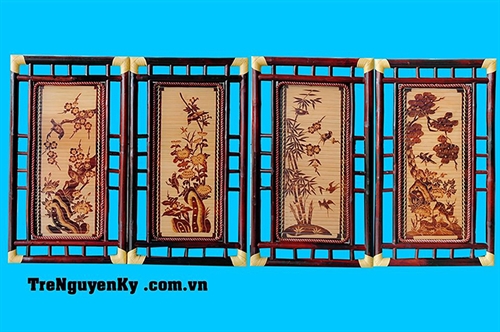 |
| A set of Tu Quy drawings made of smoked bamboo__Photo: Nguyen Van Ky |
Depending on the strength and design requirements of a product, craftsmen use different parts of a smoked bamboo pole for various components of the item. For example, in order to make a smoked bamboo chair, the biggest bamboo poles will be chosen to make front legs, back legs and arm rest to form the chair frame, smaller ones to make cross bars and vertical bars and the smallest ones to make decorative patterns of the back rest.
After measuring and cutting bamboo poles, craftsmen use a pencil to mark the locations of round tongues and round grooves. They use a hand saw to make tongues and a chisel and a hammer to make the grooves with the exact depth and width so as to fit the size of the tongues and create perfect joints. Neither adhesive substances nor bamboo nails are used to assemble separate components as the grooves act as screws to fasten these components together. The only tool to assemble and disassemble a bamboo product is a hammer.
Apart from furniture, bamboo drawings are another famous product of Xuan Lai village. Artisan Nguyen Van Ky is known as one of the pioneers in making bamboo pictures in Xuan Lai village and one of the products that helps him make his name is a set of drawings called Tu Quy (four pictures depicting flowers of the four seasons).
